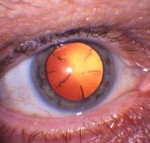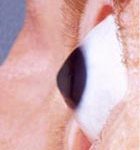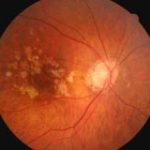Eye Conditions
Below are brief descriptions of the various eye conditions we commonly see and treat at Vision Health Institute in Orlando.
There are many different types of eye conditions that could be affecting your eyesight or could have long-term consequences if not treated properly or promptly. We list some of the more common conditions below. If you think you or someone in your family has one of these conditions, please contact Vision Health Institute in Orlando for an exam and recommendations.
All staff are residency trained doctors who have done extensive study into the mechanism of disease that affect the eye and their diagnosis and treatment. Vision Health Institute is open six days a week and accepts major medical insurance. We also provide an urgent care phone number that is accessible 24 hours a day.
Amblyopia (Lazy Eye)
Lazy eye, medically known as amblyopia, is a loss or lack of development of vision, usually in one eye. This degenerative process usually begins with an inherited condition and appears during infancy or early childhood. Lazy eye needs to be diagnosed between birth and early school age since it is during this period that the brain “chooses” its visual pathway and may ignore the weaker eye permanently.
Lazy eye is not always easy to recognize since a child with worse vision in one eye does not necessarily have lazy eye. Because of this, it is recommended that all children, including those with no symptoms, have a comprehensive eye examination by the age of three and sooner if there is a family history of any eye condition or disease. If you suspect a problem, or need to set up your child’s first eye examination, contact Vision Health Institute to set up an appointment.
Blepharitis
Blepharitis is a general term for an inflammation of the eyelid and eyelashes. It is among the most common and stubborn eye conditions usually resulting from poor eyelid hygiene, a low-grade bacterial infection (usually staphylococcal), an allergic reaction and/or abnormalities in oil gland function.
Like some other skin conditions, blepharitis can be controlled but not cured. The main goals in treating it are to reduce the amount of bacteria along the lid margin and open plugged glands. Contact Vision Health Institute to assess the severity of your problem and the best treatment method.
Cataracts
A cataract is a clouding of the eye’s normally clear lens, which leads to a progressive blurring or dimming of vision. The clouding may be a small spot or may cover the entire lens. Cataracts are the world’s leading cause of blindness and among the most common conditions related to aging – by age 65, you have a 50 percent chance of developing a cataract, and, by age 75, it jumps to 70 percent.
 A cataract starts out small and initially has little or no effect on vision. As the cataract progresses, it becomes harder to read and perform other normal tasks. When light enters the eye it is scattered, causing images to appear hazy and blurred. In the early stages, your doctor may recommend stronger eyeglasses and adjusting your lighting to reduce glare. There are many different types of cataracts. The one shown here is a cortical cataract. Here the opacity forms first is the periphery of the lens and develops inward, like spokes of a wheel.
A cataract starts out small and initially has little or no effect on vision. As the cataract progresses, it becomes harder to read and perform other normal tasks. When light enters the eye it is scattered, causing images to appear hazy and blurred. In the early stages, your doctor may recommend stronger eyeglasses and adjusting your lighting to reduce glare. There are many different types of cataracts. The one shown here is a cortical cataract. Here the opacity forms first is the periphery of the lens and develops inward, like spokes of a wheel.
When cataracts disrupt your daily life, your doctor may recommend cataract-removal surgery, which is one of the most frequent and successful procedures done in the U.S.
Computer Vision Syndrome
Computer Vision Syndrome is characterized by neck pain, blurry vision, stiff shoulders, headache and watery eyes when working in front of a computer screen. The symptoms are typically due to posture, dry eyes, eye muscle coordination and poorly corrected vision.
Since computer monitors are typically 20 to 26 inches from your eyes, your regular glasses may not be the best option for computer work. This distance range is considered intermediate – closer than what you use to drive a car but farther away than what you use to read. Special lens designs for computer work provide you with a larger intermediate area for viewing the computer and your immediate work area like the top of your desk. Vision Health Institute can help you determine if these special lenses are appropriate for you.
Diabetic Retinopathy
 Diabetic Retinopathy is a condition when a diabetic persons blood sugar gets too high. High blood sugar levels start a series of events which end in damaged blood vessel walls. As such, the blood vessels begin to leak fluid or bleed, causing the retina to swell and form deposits know as exudates. Vision can be lost if these spots are not watched and treated. Here, at our office, we carefully examine the back of your eyes to follow and manage this and other important eye diseases.
Diabetic Retinopathy is a condition when a diabetic persons blood sugar gets too high. High blood sugar levels start a series of events which end in damaged blood vessel walls. As such, the blood vessels begin to leak fluid or bleed, causing the retina to swell and form deposits know as exudates. Vision can be lost if these spots are not watched and treated. Here, at our office, we carefully examine the back of your eyes to follow and manage this and other important eye diseases.
Dry Eye Syndrome
 Dry eye syndrome refers to a breakdown in the quantity or quality of tears to moisten, cleanse and protect the eyes. This is significant because, with each blink, tears protect the surface of the eye, washing away dust and microorganisms. When this protective coating dries up, the eyes may feel “gritty” or burn and can be more sensitive to light. In extreme cases, vision can be blurred.
Dry eye syndrome refers to a breakdown in the quantity or quality of tears to moisten, cleanse and protect the eyes. This is significant because, with each blink, tears protect the surface of the eye, washing away dust and microorganisms. When this protective coating dries up, the eyes may feel “gritty” or burn and can be more sensitive to light. In extreme cases, vision can be blurred.
If you suspect that you have dry eye, see your eye doctor. Proper care will not only increase your comfort – it will protect your eyes. Your eye care provider can perform a series of tests to determine if you have dry eyes.
Glacoma
Glacoma is a slowly progressive disease that can eventually lead to blindness if left untreated. The doctors at Vision Health Institute specialize in the treatment of glaucoma, with the benefit of advanced technology such as the Topcon OCT, Carl Zeiss Visual Field Analyzer, Topcon Digital Retinal Camera and the Icare tonometer.
Keratoconus
 Keratoconus is a disorder that occurs when the cornea, which is typically rounded, becomes cone-shaped. The progression is usually slow and can stop at any stage from mild to severe. This distortion increases as the cornea bulges and thins. The apex of the cornea often scars, reducing the vision. Treatment of Keratoconus is most effective with gas permeable contact lenses, designed specifically for the irregular corneal surface. If contact lens treatment is not successful, surgical corneal transplant may be necessary.
Keratoconus is a disorder that occurs when the cornea, which is typically rounded, becomes cone-shaped. The progression is usually slow and can stop at any stage from mild to severe. This distortion increases as the cornea bulges and thins. The apex of the cornea often scars, reducing the vision. Treatment of Keratoconus is most effective with gas permeable contact lenses, designed specifically for the irregular corneal surface. If contact lens treatment is not successful, surgical corneal transplant may be necessary.
Macular Degeneration
 Macular degeneration is a condition in which the central part of the back of the eye loses blood circulation. It is considered a natural aging process. There is a breakdown of retinal pigment epithelium cells in the macular region. As the disease progresses, central vision diminishes. It is believed that this breakdown may be due to a lack of nutrients being supplied to the region. Additional studies have found a genetic link to this disease. Treatment can range from better nutritional management, sometimes to include a tablet containing the primary minerals and vitamins that are found lacking in many macular degenerated patients.
Macular degeneration is a condition in which the central part of the back of the eye loses blood circulation. It is considered a natural aging process. There is a breakdown of retinal pigment epithelium cells in the macular region. As the disease progresses, central vision diminishes. It is believed that this breakdown may be due to a lack of nutrients being supplied to the region. Additional studies have found a genetic link to this disease. Treatment can range from better nutritional management, sometimes to include a tablet containing the primary minerals and vitamins that are found lacking in many macular degenerated patients.
Strabismus
Cross-eyed, medically known as strabismus, refers to a condition in which eyes are misaligned. It commonly occurs when the muscles that control eye movement are not properly working together. The result is one or both eyes turning inward, outward, upward or downward, or one or both eyes moving irregularly.
Strabismus is usually diagnosed during childhood and affects about 4 percent of children, afflicting boys and girls equally. Though it cannot be prevented, its complications can be avoided with early intervention. Even if you notice symptoms intermittently – when your child is ill, stressed or fatigued – alert your eye care provider.
Vision Health Institute has the experience and equipment necessary to diagnose and often treat the eye conditions detailed above at our office in Orlando. For more information please schedule an appointment with your eye care provider, and we will be in touch with you shortly.
